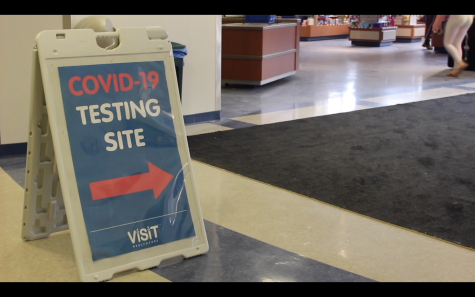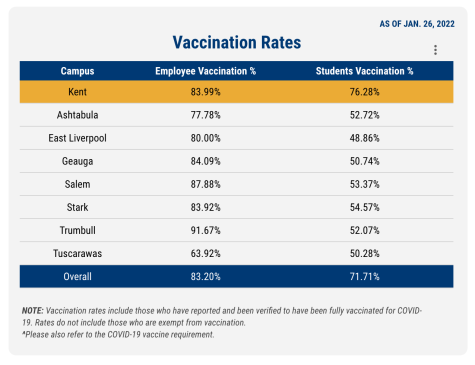Kent State faculty find new ways to teach online
March 27, 2020
Kent State faculty have found new and innovative ways to deliver coursework to students digitally who are in more hands-on and experience-based courses.
Schools like architecture, art, theater and dance and fashion have more experience-based courses offered to students that are more suited for in-person instruction.
A poll conducted by KentWired found that of 488 people surveyed, 69 percent of students found the transition to online courses to be difficult, 22 percent were indifferent and nine percent found the transition easy.
Marie Bukowski, director of the School of Art, said a vast majority of the courses students are taking this semester involve physically making things, which have posed some difficulties when moving courses online.
“I think we’re the most difficult to transition to remote because we’re asking students to keep up their studio productivity without access to major equipment, without access to tools, without appropriate ventilation, without even an appropriate space,” she said.
Bukowski said faculty are using innovative ways, like showing demonstrations on how to make art in their kitchens or with limited resources to show students how to make their spaces work.
Faculty are no longer requiring oil-based paints for work due to the chemicals required to thin it down.
Art history and art education courses were easier to transition online, Bukowski said, but have been working with the state to make sure students who were student teaching were able to get the hours they needed to count towards their degrees.
Bukowski said another challenge for art history students is having access to library resources for their research papers.
“In addition with library access now coming to a halt, there’s research papers that need access to books and documents…,” Bukowski said. “I think the university is doing a really great job to try to meet us halfway.”
Frankie Luke, a senior visual communication design major, said some of his courses have been more difficult transitioning to online due to communication with peers and making physical projects.
“I have a group project for my 3D graphic design project and it’s weird because some people (who) lived in the dorms are home now, so I can’t get a hold of them very easily,” Luke said.
Ivan Bernal, architecture program director, said moving studios online is not ideal, but faculty and students are making it work.
“Teaching studio remotely is not ideal because a lot of the studio is based on the constant feedback between faculty and students, one on one criticism and constructive criticism, but also the lateral learning that happens between students,” he said.
Bernal said faculty are using Blackboard Collaborate Ultra to talk with students about their projects and get one-on-one feedback. Faculty are also using a program called Miro, a software in which students can show their work and faculty can give feedback.
“(Miro) is an infinite whiteboard where students can fill out their work and leave comments to each other and give feedback to each other,” Bernal said. “The faculty professors are also able to red line their drawings, comment, make notes within projects.”
Kyle Noyes, a senior architecture major, said many of his courses in his last year involved meeting with consultants for various projects.
“We found out now that we’re using Google Hangouts, we’re using Microsoft Zoom… we’re moving to entirely online sessions,” he said.
Kailey Klimkowski, a sophomore music voice major, said all of her performances with her different vocal ensembles and Kent State Opera Theater were cancelled.
“We would have rehearsals three, four or five times a week, obviously in person, either music rehearsals where we’re learning the music for the opera, or we would have staging rehearsals where we would be in a space that had like the stage taped out on the ground, so we could like actually block the show, and like work with different actors who are also on stage for those scenes,” she said.
Klimkowski’s voice lessons are now over FaceTime and she records herself singing on video in her home, which she said is challenging for a number of reasons.
“It’s so weird to go from being able to go to the music building whenever you wanted basically, to go to a practice room and practice by yourself…,” Klimkowski said. “If I have to do a recording for a class … it’s okay, I need to go lock the dogs up upstairs, I have to make sure nobody comes into the room because it has to be a full body recording of me. It’s just an adjustment because you don’t have access to the spaces that you need anymore to practice.”
Louise Valentine, director of fashion design and merchandising, said the school’s community is strong and are doing everything they can to make this transition as seamless as possible for students.
“[We are] just going step by step, day by day, and doing absolutely everything that is possible to make sure the transition is as seamless and as supportive to our students as possible,” Valentine said. “A huge thank you goes to the faculty, the staff and the students themselves for allowing us to be where we are today which is a really strong position. There’s still more to do, there always will be. Do we have all the answers? No, we don’t. But as soon as I do, then my faculty and staff and students do too.”
Contact Molly Heideman at [email protected].

















